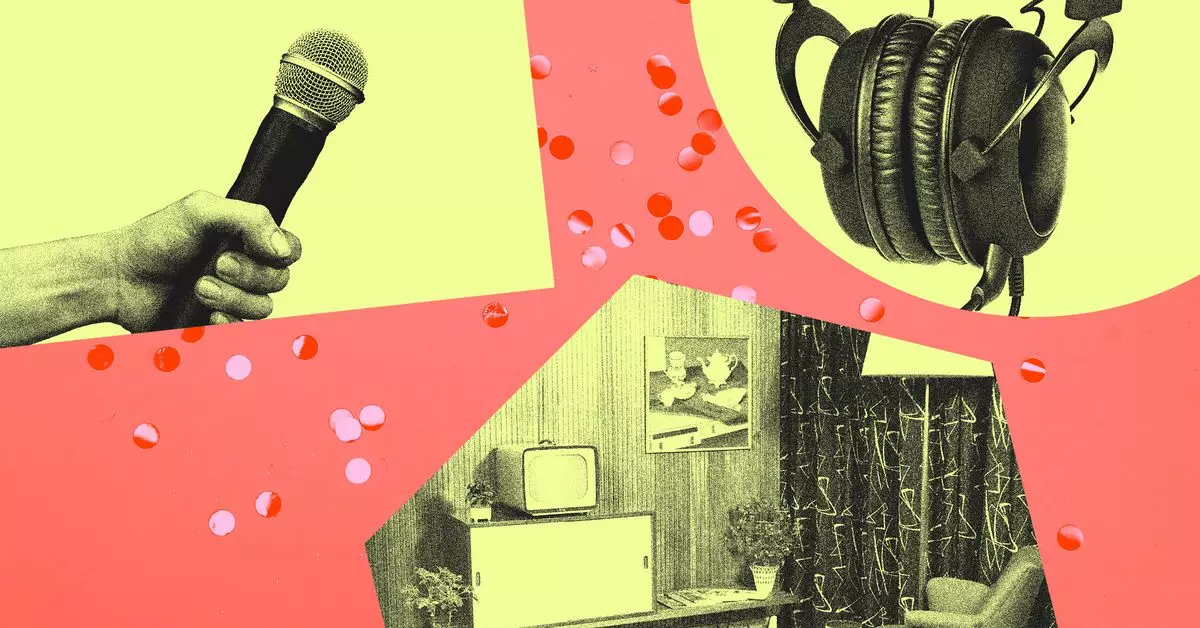In recent years, the world of podcasting has undergone a remarkable transformation, as audio content gives way to an increasingly visual-centric reality. Traditionally, podcasts were rooted in audio-only formats that appealed to audiences seeking passive entertainment. However, as we delve deeper into 2024 and beyond, a significant shift is happening—one where video content is becoming the heart of podcasting, capturing the attention of listeners and viewers alike. The trend is not just about aesthetics; it’s a reflection of evolving consumption patterns and technological advancements. With major podcast networks like NPR and The New York Times stepping into the video arena, the push toward a hybrid media approach is more pronounced than ever.
At the forefront of this evolution is the engagement factor. While audio podcasts once thrived on intimate, behind-the-scenes narratives, the addition of a visual component has redefined the way stories are told. Those who have mastered the art of video podcasts are not merely reshaping their media presence; they are opening new pathways for connection and interaction by integrating visual storytelling with traditionally auditory experiences.
The introduction of video elements in podcasting aligns perfectly with the most popular social media platforms of our time, where short, engaging video snippets dominate viewer attention. TikTok, Instagram Reels, and YouTube Shorts have become playgrounds for clips from podcasts that have managed to capture the allure of unwatched moments shared directly from the recording studio. This visual angle serves to attract new demographics, particularly younger viewers who are more accustomed to consuming content through video than via audio.
Platforms like Spotify are capitalizing on this movement by incentivizing podcasters to incorporate video, thus broadening their audience reach. The marriage of video and sound not only allows for richer storytelling but also offers a more immersive experience for viewers, making them feel more connected to speakers—especially in casual, conversational settings. With such influence from social media trends, it is imperative for content creators to adapt swiftly to retain relevance in this rapidly changing landscape.
As video podcasts gain traction, specific trends are emerging within the production styles that warrant attention. One noticeable theme is the stylistic choice of studio design. Many modern podcast setups are beginning to resemble cozy living rooms or casual hangout spaces rather than sterile, professional studios. This shift aims to create an inviting and relaxed atmosphere that encourages free-flowing conversations among hosts and guests. Accents such as lamps, bookshelves, and even faux plants promote an approachable vibe that resonates well with listeners seeking authenticity.
Another prominent trend is the use of wood paneling in studio backgrounds, ideal for sound absorption while maintaining a homely feel. This design feature has seemingly become a staple in podcast aesthetics, adding a contemporary touch that appeals to viewers’ eyes. Furthermore, producers are opting for creative lighting solutions—neon signs and colorful accents—that enhance visual engagement, creating a dynamic backdrop that pops on screen.
However, not all contemporary visual approaches come without complications. The prevalence of traditional microphone stands, for example, can often result in awkward visual experiences as they protrude into camera frames, leaving viewers momentarily distracted. While tactics such as handheld microphones have emerged to create a more intimate atmosphere, they may lead to logistical challenges for guests—especially those who are inexperienced in managing microphone placement and technique.
Forecasting the future of video podcasting brings exciting possibilities. As we look to 2025 and beyond, it is likely that producers will move away from standardized conventions, experimenting with innovation to carve out unique identities in this crowded market. The current obsession with large headphones and bulky microphones may give way to sleeker alternatives, such as lavalier mics and in-ear monitors, allowing hosts and guests to engage more naturally without obstructing their faces.
Moreover, there could be a notable convergence between what we consider ‘podcasts’ and traditional television shows. As audiences increasingly consume content across numerous platforms, media executives may blur the lines separating these formats. Syndication on platforms like Roku, Pluto, and Tubi could further position podcasts as the next wave of streamlined entertainment, transitioning into what viewers might simply refer to as “shows.”
As production tools become more affordable and accessible, a wave of creativity will inspire content creators to venture into diverse recording locations, turning unconventional spaces into makeshift studios that have the potential to produce captivating content. Coupled with advancements in post-production software, the challenges posed by varied recording environments will become less of a barrier and more of an opportunity for creative expression.
While video podcasts are already reshaping the media landscape, their journey is only just beginning. With trends indicating a meaningful shift toward visual storytelling, the podcasting world is primed for innovation as both audio and video creators mingle and experiment with fresh concepts, ultimately pushing the boundaries of what podcasts can become.

